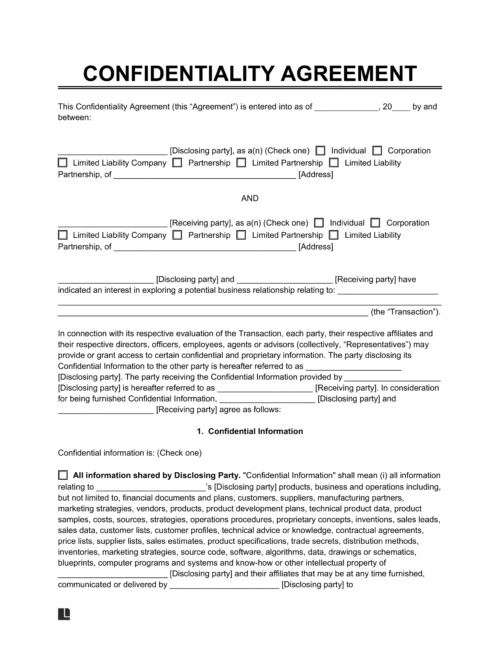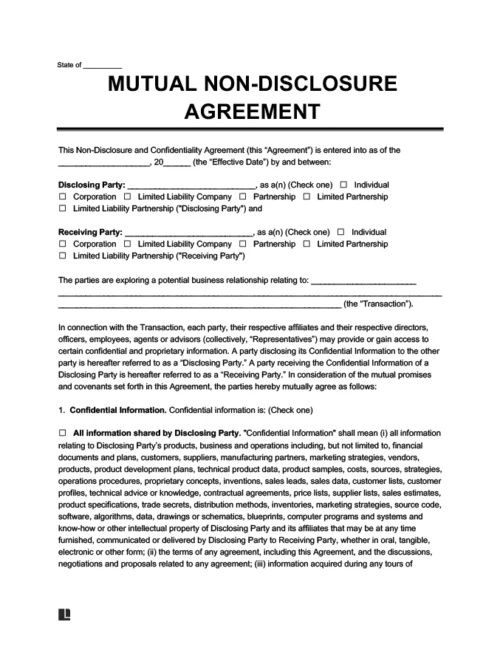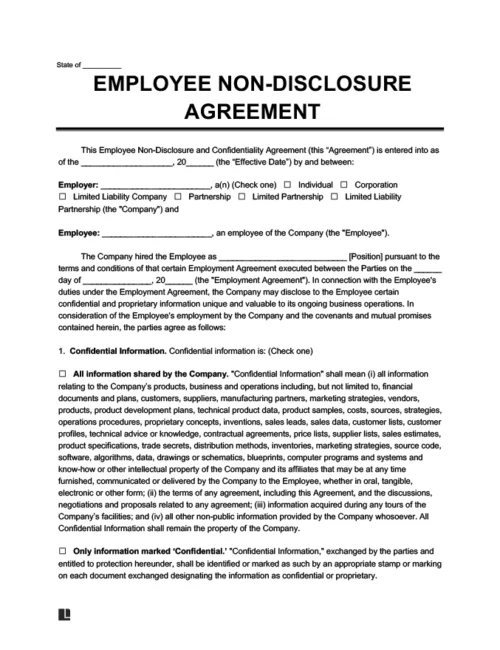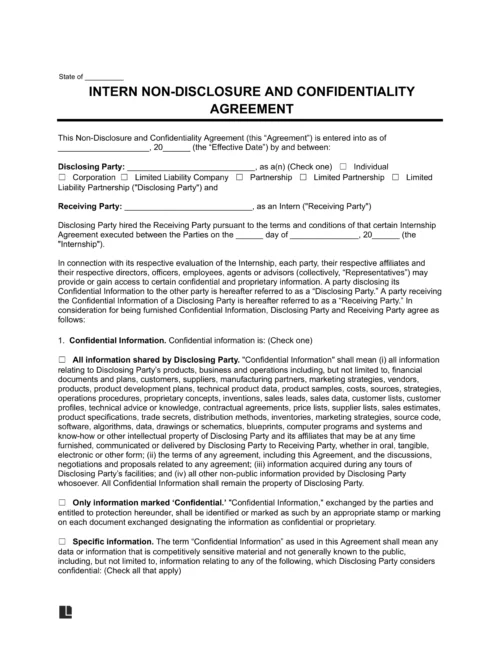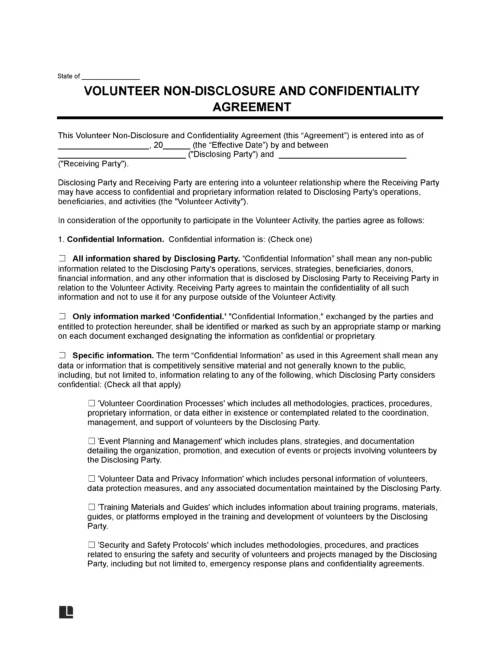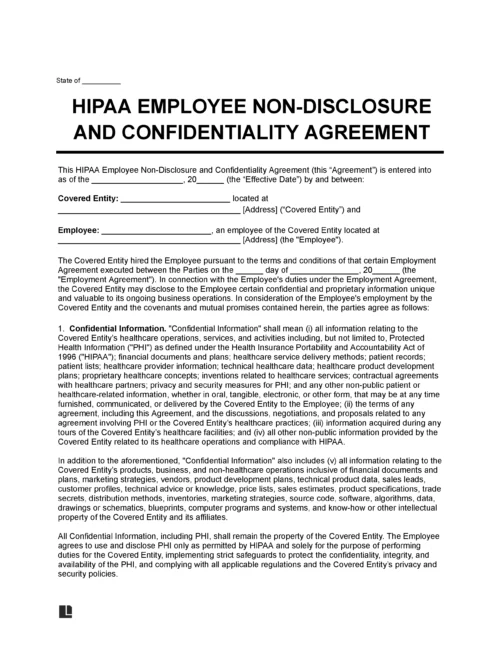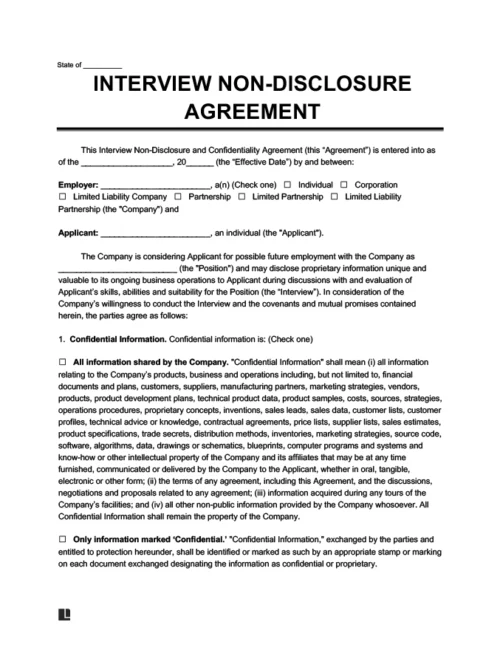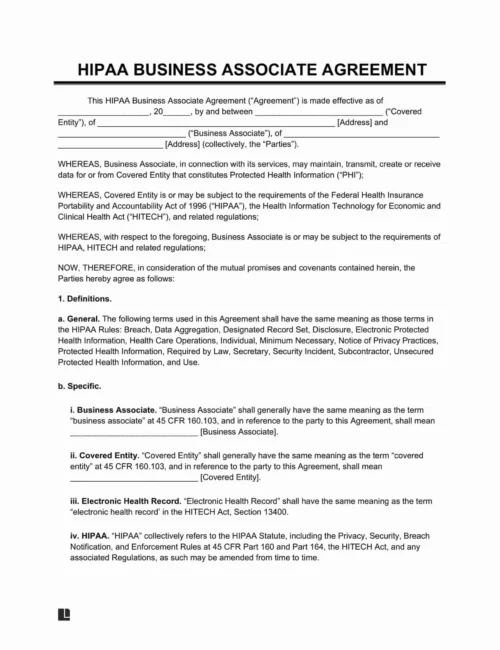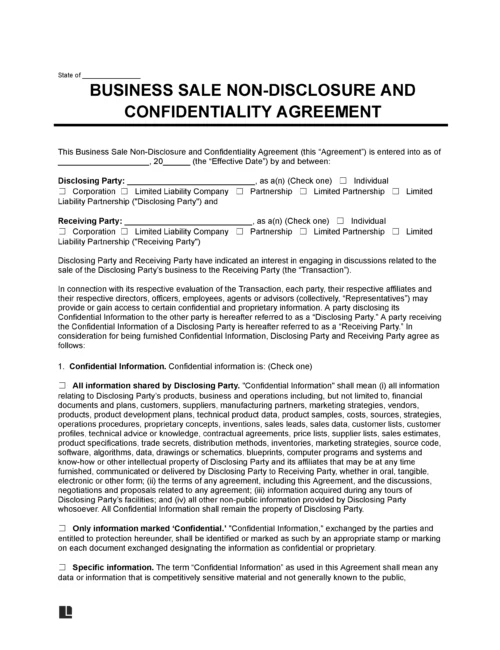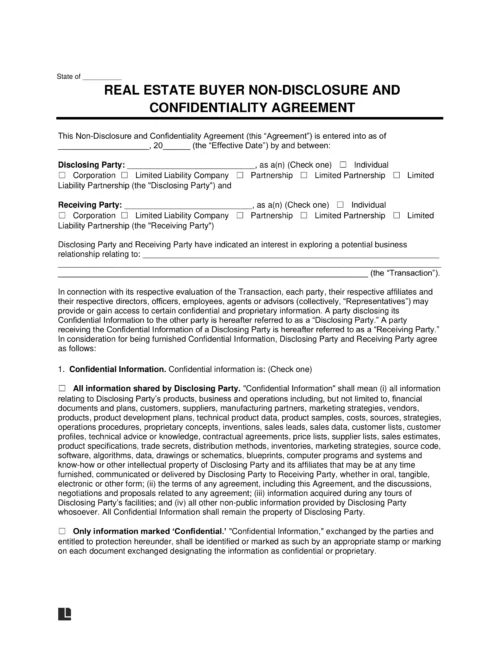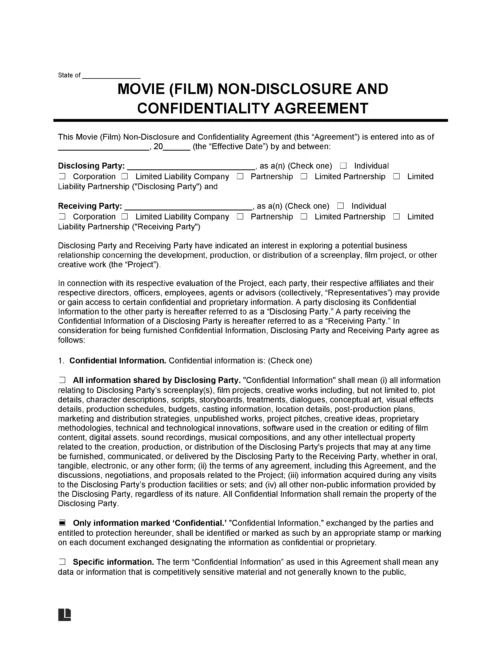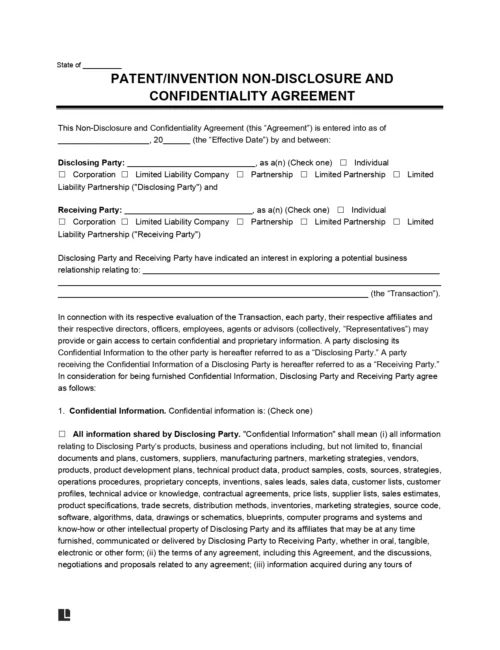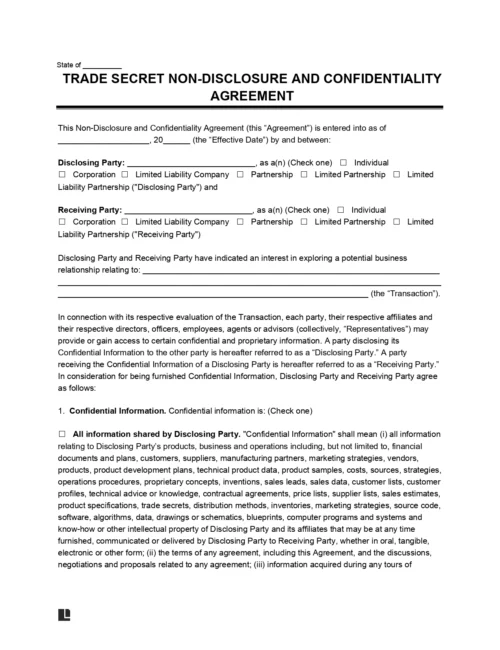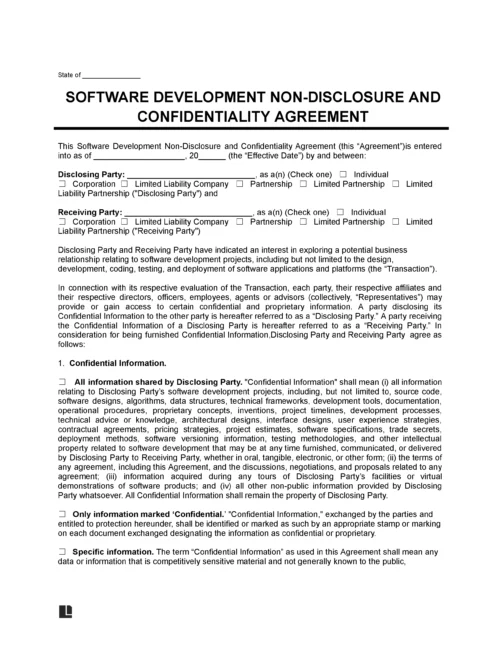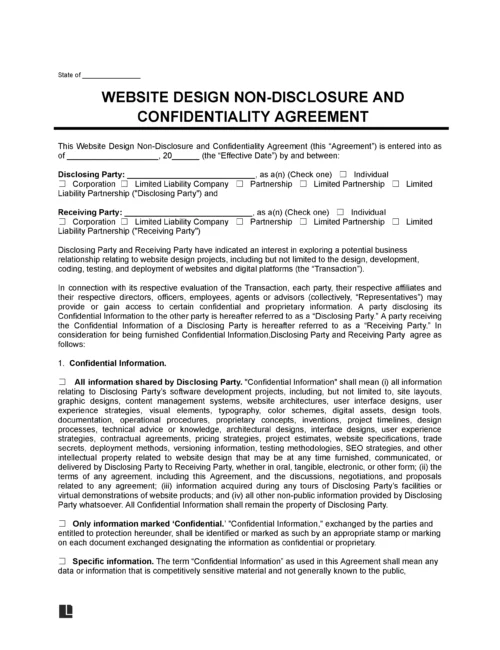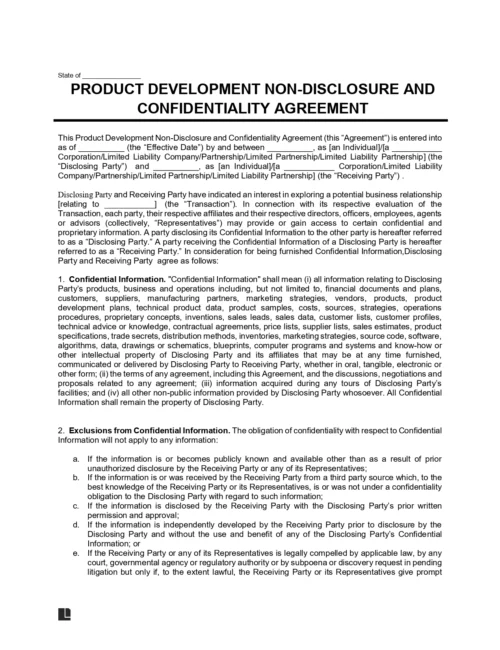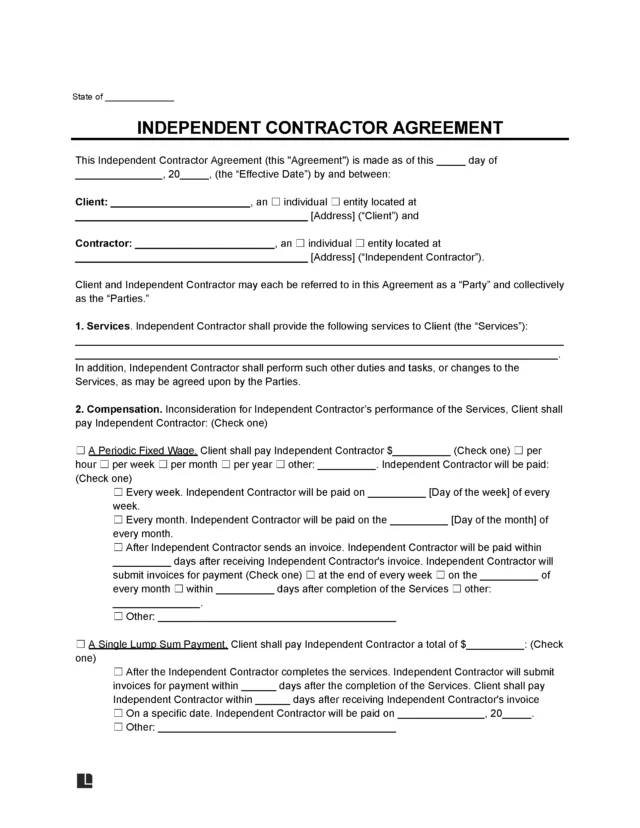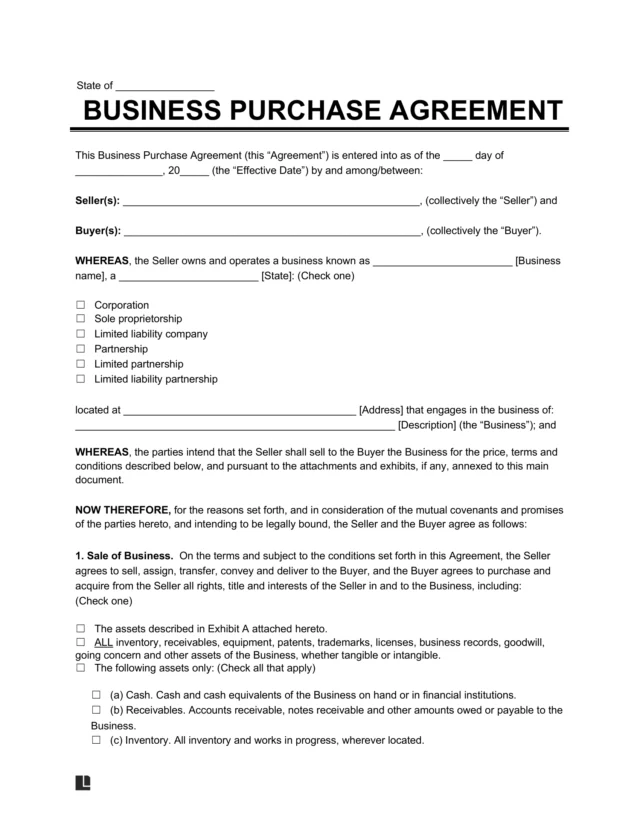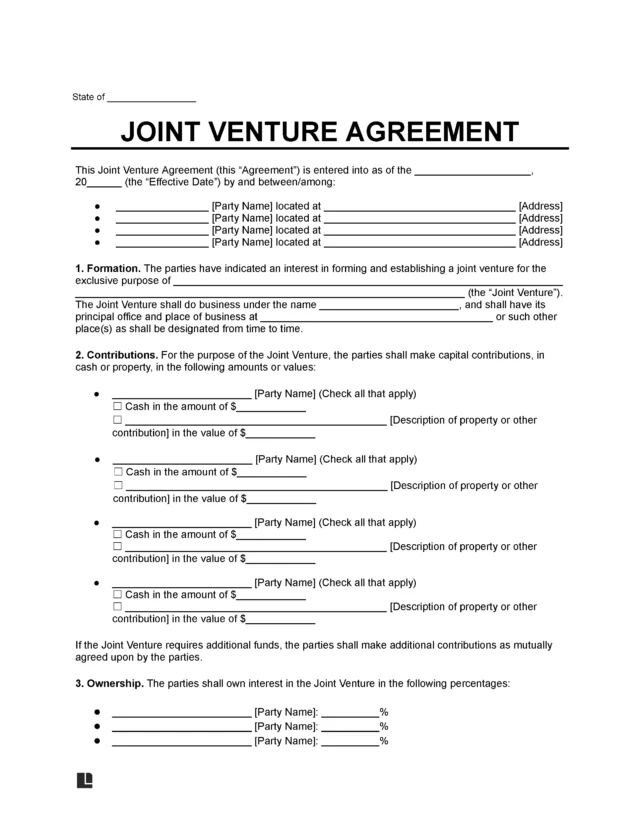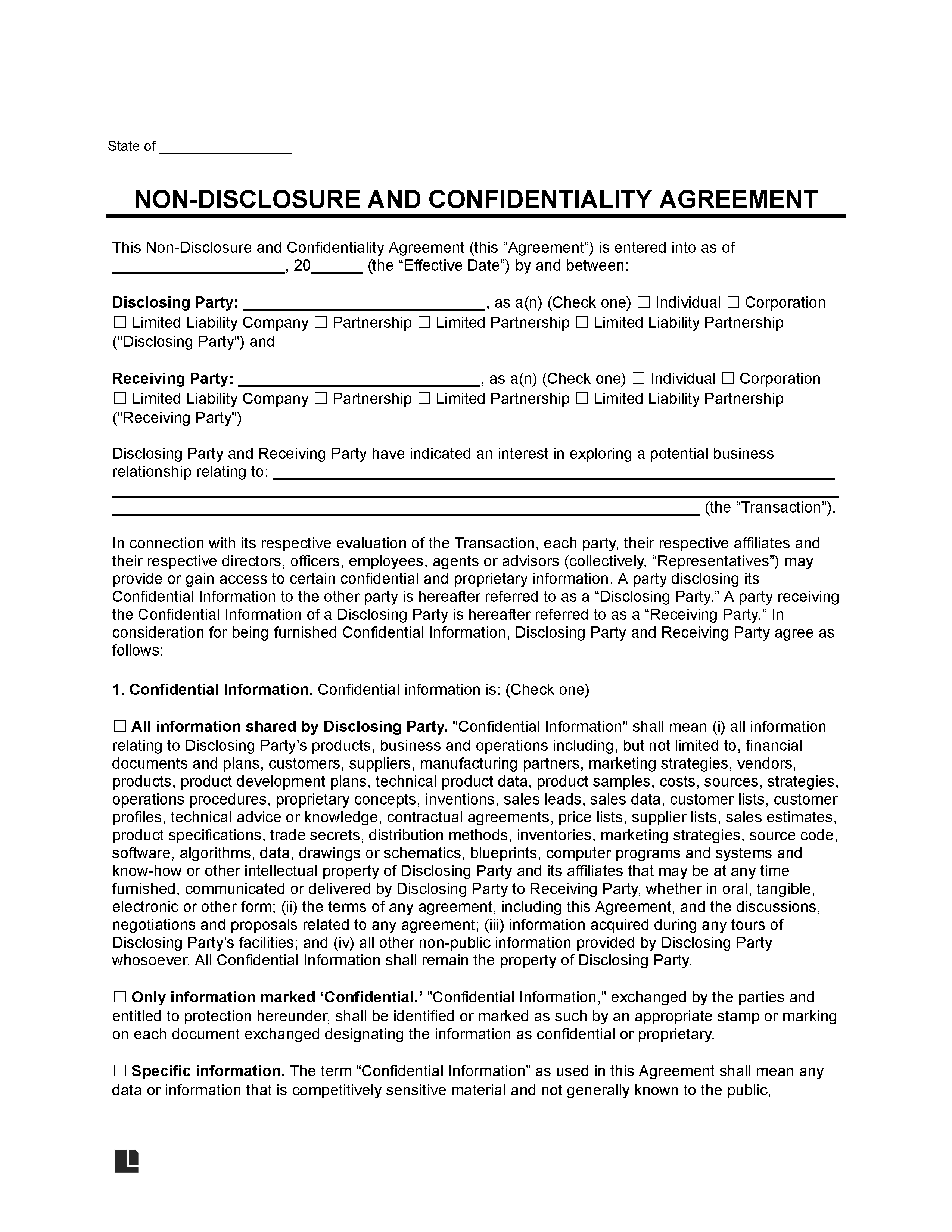What Is a Non-Disclosure Agreement?
A non-disclosure agreement (NDA) is a legal contract that helps keep sensitive information private. It defines what must stay confidential, who is responsible for protecting it, and how long the agreement lasts. If someone breaks the agreement, the NDA outlines what legal action the other party can take. NDAs can be legally binding if they follow state laws and have the proper signatures.
An NDA, also called a confidentiality agreement, can protect either one or both of the parties involved. The two common types of NDAs include:
- Mutual NDA: In this agreement, both parties agree to keep information private. They protect each other’s information, and either party can take action against the other if there’s a breach of contract.
- Unilateral NDA: In a unilateral NDA, only one party is restricted from sharing specific details. The individual responsible for maintaining privacy does not receive any protection in return.
No matter your situation, our NDA template makes it easy to create an agreement that fits your needs. Customize your agreement for business deals, employee contracts, partnerships, and more.
NDA vs Non-Compete
Unlike a non-compete agreement, which restricts someone from working for a competitor, an NDA only protects confidential information. If your goal is to limit competition, a non-compete may be more appropriate, but it’s more limited in some states.
Types of Non-Disclosure Agreements
Non-disclosure agreements (NDAs) protect confidential information in many situations. You can use them for business deals, employment contracts, real estate transactions, and financial agreements. Some NDAs are general, while others are designed for specific industries like technology, healthcare, or intellectual property.
To make it easy, we’ve grouped the most common NDA types below. Explore the options and choose the template that best fits your needs.
Standard NDAs
These general non-disclosure agreements cover common confidentiality needs for individuals and businesses. You can customize our NDA templates to fit your specific situation.
Contractor & Employee NDAs
Companies use these NDA templates to protect sensitive business information shared with employees, contractors, and interns. An employee NDA can cover important company information, such as:
- customer information and purchase history
- intellectual property and copyrights
- marketing and service strategies
- business and financial operations
Financial & Business NDAs
These agreement templates are designed for business sales, partnerships, financial transactions, and company plans. Implementing these agreements ensures your partners or employees can’t provide sensitive details to outside parties. You can use a business or financial NDA to protect the following information:
- business strategies
- technological developments
- vendor information
- investment or financial actions
Real Estate NDAs
When sharing property details with buyers, sellers, or tenants, these NDA templates help protect confidential discussions. Common details included in a real estate NDA include:
- property revenue
- tax information
- environmental reports
- appraisal values
- buyer income and credit information
Industry-Specific NDAs
Certain industries, such as film, design, or technology, require specialized NDAs. These agreements protect trade secrets, intellectual property, or project details. Competitive and innovative companies often use an industry-specific NDA to ensure discretion for the following information:
- creative projects
- product designs and pending patents
- software developments
- product and web designs
State-Specific NDA Laws
Non-disclosure agreements must follow state laws to be legally enforceable. While the core terms remain the same, each state sets its own rules on trade secrets, enforcement, and limitations.
Find out how NDA laws apply in your state and create a contract that meets local legal standards.
| State | State Laws | Statute of Limitations |
|---|---|---|
| Alabama | Title 8, Chapter 27 | Two years AL Code § 8-27-5 |
| Alaska | AS 45.50.910 – 45.50.945 | Three years AS 45.50.925 |
| Arizona | Title 44, Chapter 4 | Three years AZ Rev. Stat. § 44-406 |
| Arkansas | Ark. Code §§ 4-75-601 — 4-75-607 | Three years Ark. Code § 4-75-603 |
| California | CA Civ Code § 3426-3426.11 | Three years CA Civ Code § 3426.6 |
What to Include in an NDA
A strong NDA must include key elements to be enforceable and protect sensitive information. If you use our NDA template, all essential clauses are built in. However, if you’re writing your own, make sure to include the following:
- Parties involved: Clearly name the disclosing and receiving parties to avoid loopholes. If multiple entities are involved, list them explicitly.
- Definition of confidential information: Be specific. Instead of vague terms like “all information,” list written, verbal, electronic, or visual data covered under the NDA.
- Obligations of the receiving party: State what the recipient can and cannot do with the confidential information. For example, they can review the data for a partnership but cannot use it for personal gain.
- Duration of the agreement: Courts favor NDAs with clear time limits. A trade secret NDA may last 5–10 years, while a product development NDA may expire in 1–3 years.
- Remedies for breach: Outline what happens if someone violates the NDA. Common remedies include mediation, arbitration, or legal action.
- Exclusions: NDAs do not apply to public knowledge, independently developed information, or data the recipient already had permission to share.
How to Create a Non-Disclosure Agreement
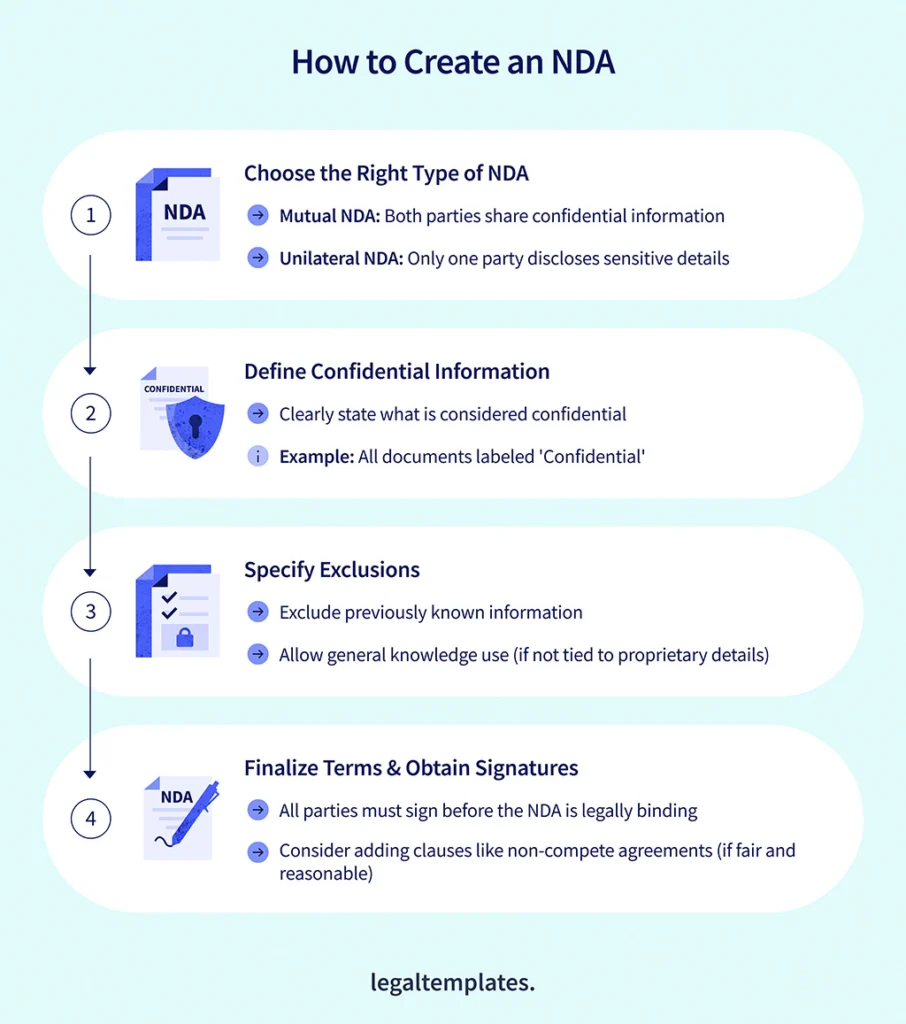
It’s essential to get your NDA just right. When written thoughtfully, it can ensure private details are only disclosed to those you intend to share them with.
1. Choose the Right Type of NDA
Start by choosing the right NDA for your situation. If you’re in a specialized industry, you can ensure that you choose the right agreement format.
You can also consider who’s sharing information, as this detail can dictate your NDA type. A mutual NDA is useful when both parties share confidential information, such as during a partnership. Alternatively, a unilateral NDA is for when only one party discloses sensitive information.
| Aspect | Mutual NDA | Unilateral NDA |
|---|---|---|
| Binding Effect | Binding on both parties | Binding on recipient only |
| Flow of Information | Info goes both ways | Info only goes one way |
| Legal Recourse | Both parties have it against each other | Disclosing party has legal recourse |
2. Define the Scope of Confidential Information
Confidential information must be clearly defined, but you don’t need to detail every document and piece of work. For example, you might be able to describe “confidential information” as “all documents labeled ‘Confidential.'”
When you use our template, you can choose which types of information you want to remain private. You can define it as “All information shared with the receiving party” or “Only specific information.” If you choose “Only specific information,” you can further narrow it down by business category.
Not All Information Counts as Confidential
An NDA can only protect certain types of information. It won’t apply to:
- Facts that are already public
- Details that the other party knew before signing
- Information shared by someone else legally
- Anything the recipient figured out on their own
Trying to include these in your NDA can weaken your agreement and make it harder to enforce.
3. Specify Exclusions
Specify widely accepted exceptions to ensure your NDA isn’t too restrictive. For example, suppose the receiving party worked with you on a previous project. Any knowledge they gained from the previous project would be excluded from the current NDA.
You can also specify any non-standard exclusions that you want to include. For example, an employee may gain general knowledge when working for you. You may clarify that they can use this knowledge elsewhere if it’s not tied to specific proprietary details.
4. Finalize Terms & Obtain Signatures
Everyone must agree on all terms and sign the final NDA before it is a legal contract. It’s a good idea to have a legal professional review your final NDA before you sign it.
Before signing, you may choose to incorporate additional clauses. For example, you may decide to include a non-compete clause. This kind of clause bans the recipient from working with competitors. You must write the clause to keep it reasonable and fair to all parties. For example, your non-compete clause must not be indefinite. It must also only apply to specific areas where your business has interests.
Sample Non-Disclosure Agreement
Below is a sample non-disclosure agreement you can review to see how NDA forms are typically structured. When you’re ready to create your own, try our Non-Disclosure Agreement template builder for free. You can customize the NDA form to fit your needs and download the final agreement in PDF or Word format.
How Long Do Non-Disclosure Agreements Last?
The length of a non-disclosure agreement depends on the terms set in the contract. Some NDAs last for a specific time period—such as two to five years—while others remain in effect indefinitely, especially when protecting trade secrets.
Most NDAs last as long as the confidential information needs protection. However, courts may not enforce overly long NDAs if they seem unreasonable or too restrictive. To avoid confusion, always clearly state the duration in your NDA.
Are NDAs Enforceable?
Yes, NDAs are enforceable and legally binding as long as they meet the legal requirements. Use the following steps to help make your NDA enforceable:
- clearly define confidential information
- set a reasonable time limit for confidentiality
- make sure both parties benefit from the agreement
- follow state laws and public policy
Courts may challenge NDAs if they’re too broad, last too long, or try to restrict reporting discrimination. To avoid these issues, our non-disclosure agreement template includes pre-written clauses that follow legal best practices and give both parties fair protection.
If someone violates an NDA, you may be able to take legal action. A common first step is to send a violation of NDA cease and desist letter to demand that the other party stop disclosing the information.
Limitations for Enforcing NDAs
Washington’s Silenced No More Act limits the use of NDAs in employment settings. California also has its own Silenced No More Act in place. These acts prohibit employers from enforcing non-disclosure agreements that prevent employees from discussing illegal workplace conduct, including harassment, discrimination, and retaliation.
Many other states, including Arizona, Colorado, and New York, have state-specific NDA laws prohibiting the enforcement of an NDA for sexual misconduct and unjust discrimination against employees. Check your state guidelines for a better understanding of the requirements and limitations.


